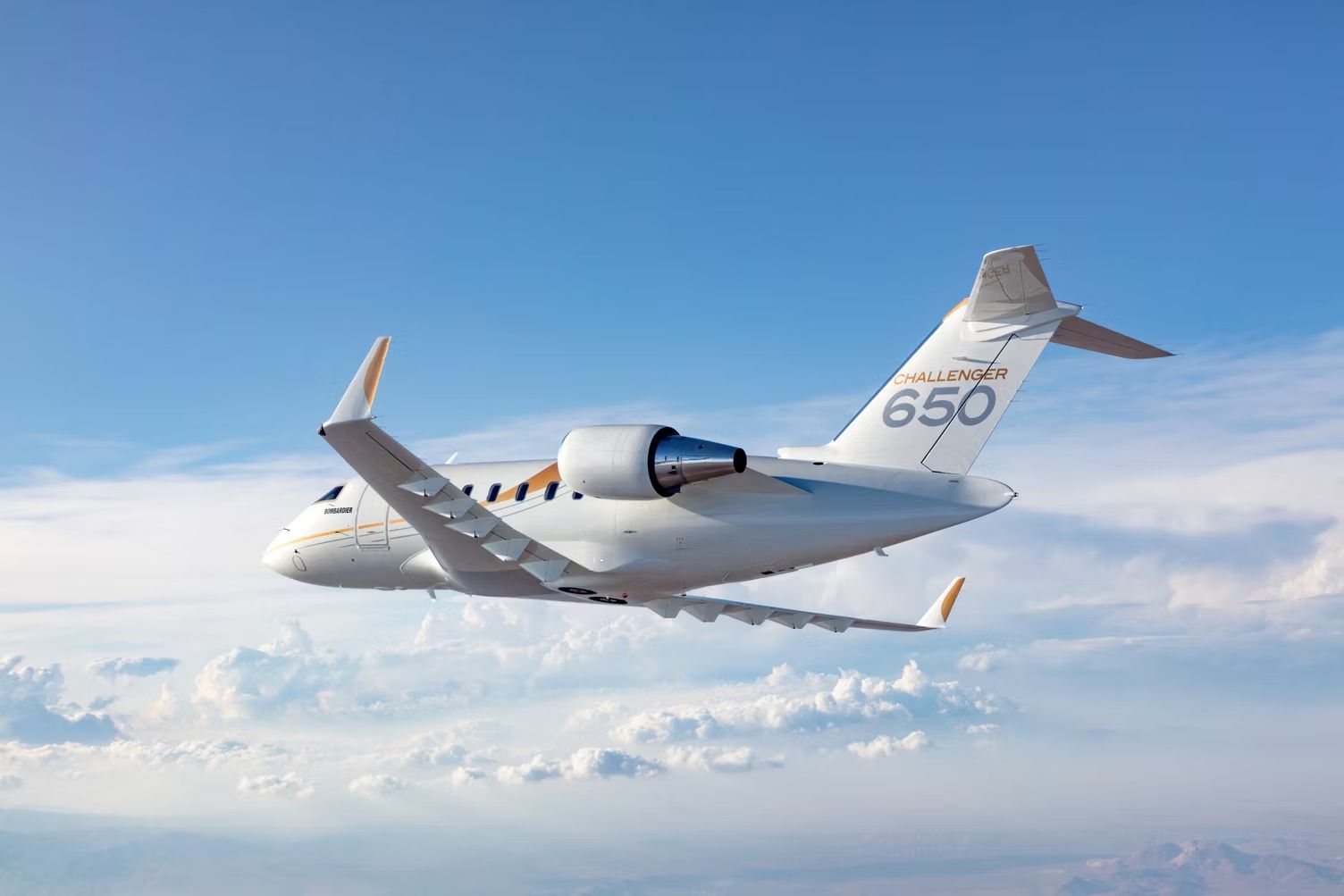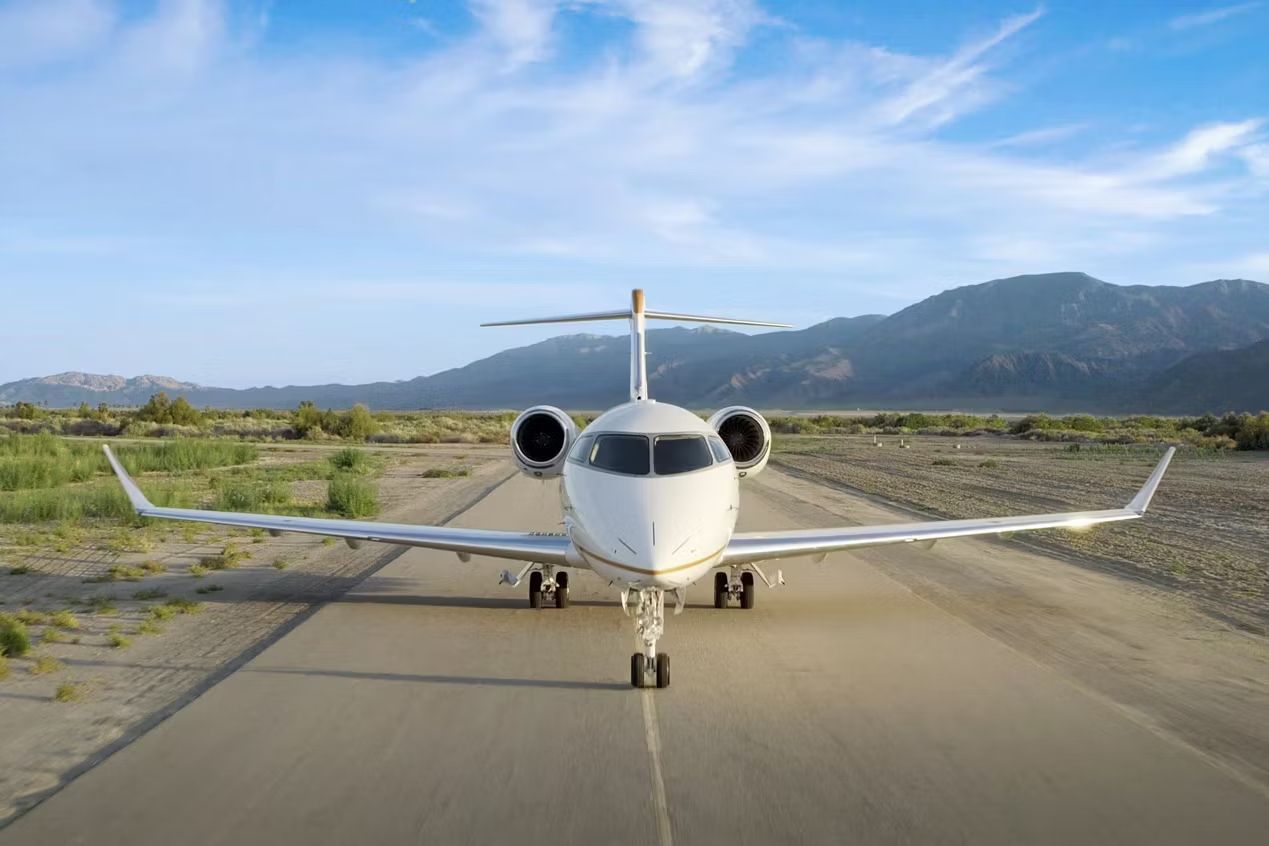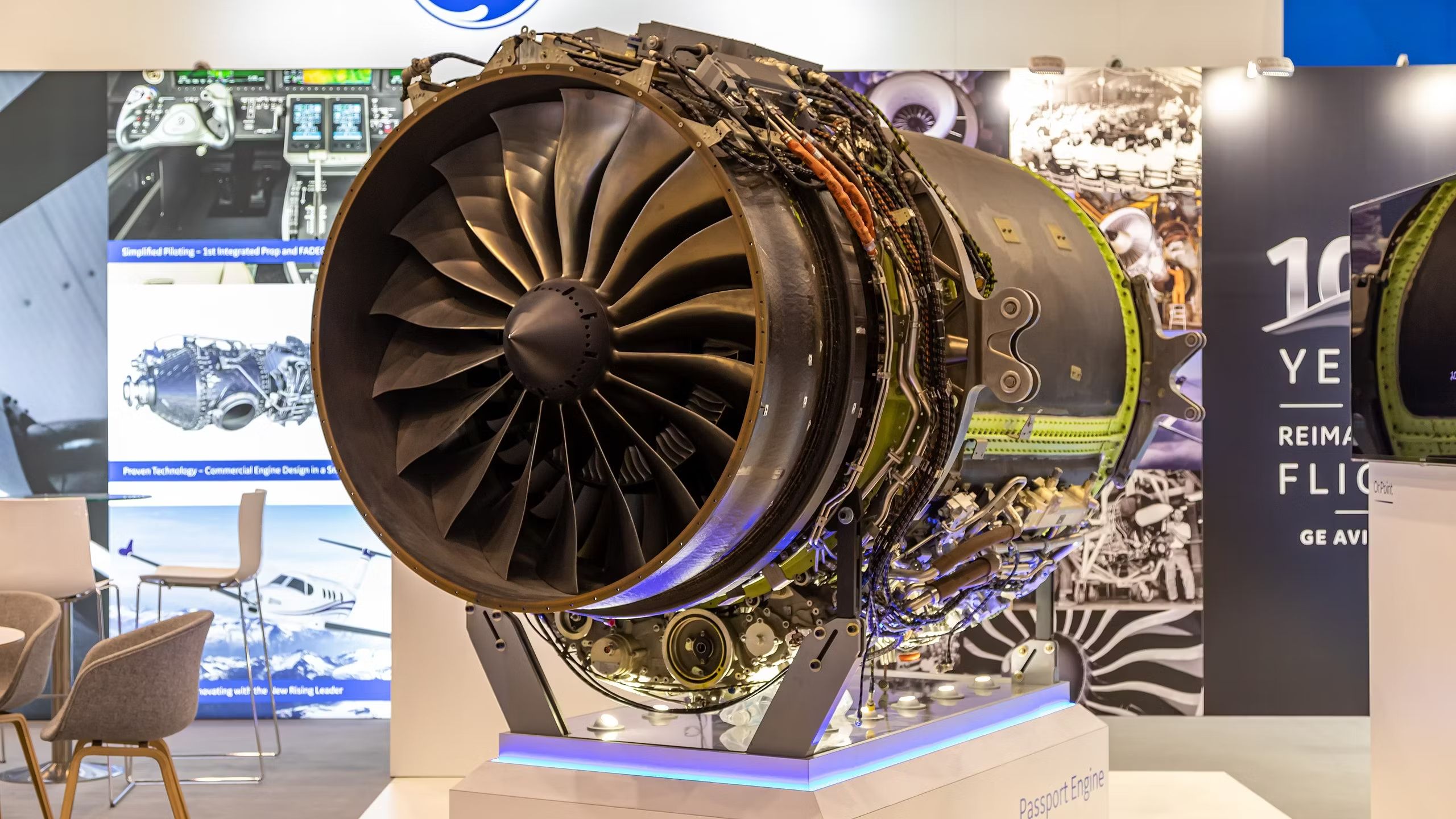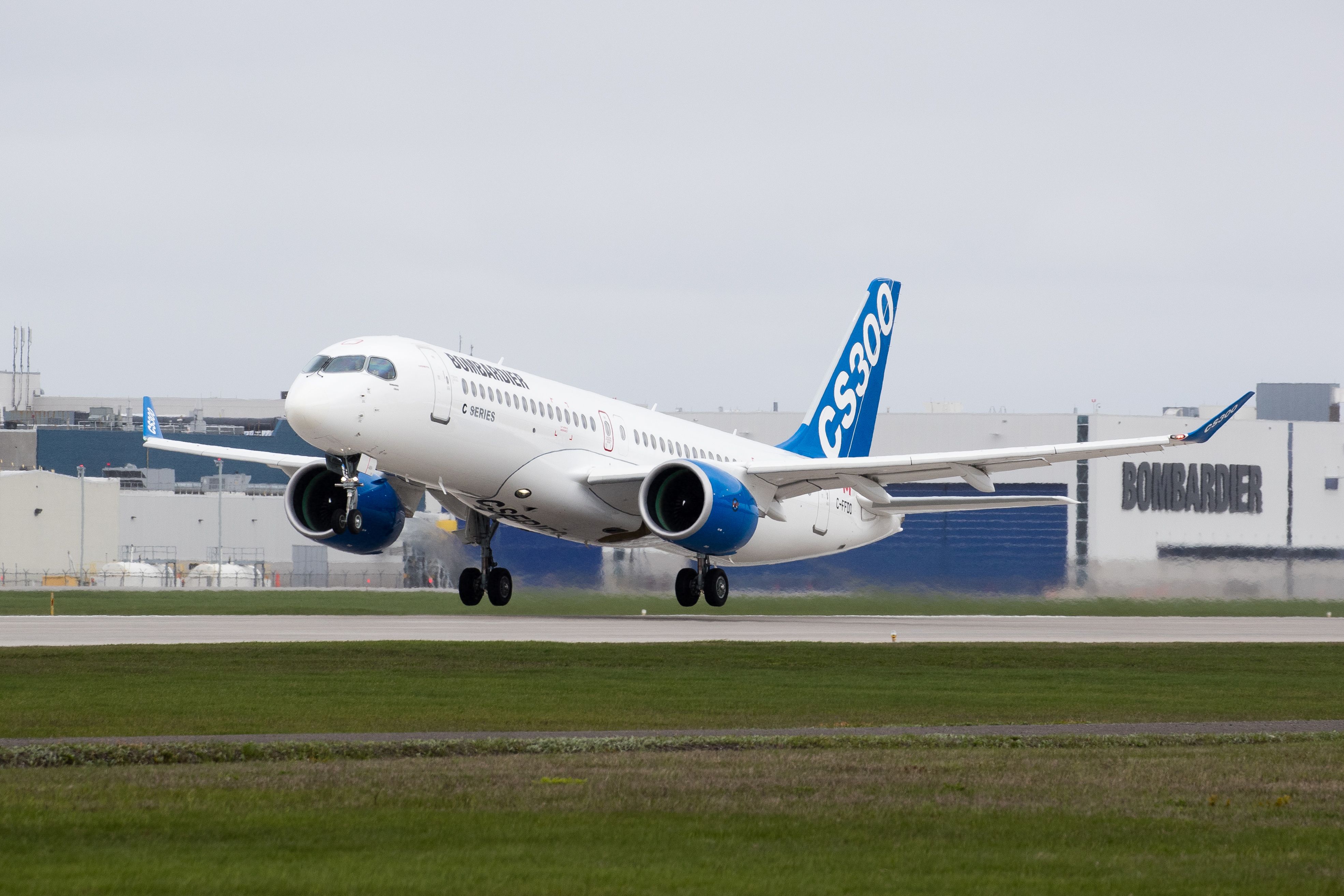Summary
- Bombardier’s private jets are powered by a range of turbofan engines, including the famous General Electric GE34 and Honeywell HTF7000.
- Over 5,500 units of the GE34 engine are in service, a powerplant used for Bombardier’s Challenger 600 series.
- The Honeywell HTF7000 is the primary powerplant for Bombardier’s Challenger 350 and has high-reliability rates for its size.
Canadian aerospace giant Bombardier has long sat near the top of the global leaderboard for private jet sales alongside manufacturers like Dassault and Gulfstream. Much like most other executive aircraft on the market, the manufacturer’s offerings are powered by a pair of dynamic rear-mounted turbofan engines.
From the short-range Challenger 350 to the intercontinental Global 8000, Bombardier’s private jet lineup has an offering for all ranges and capacity requirements. Furthermore, with incredible speeds that push the limits of subsonic flight (the Global 8000 can even hit an impressive maximum velocity of Mach 0.94), these jets use must be equipped with the latest and most powerful engines.
But which engines specifically does the company favor? In this article, we will look at five of the most popular turbofan engines you could find on Bombardier private jets today.
1 General Electric GE34
|
First run: |
1982 |
|
Fan diameter: |
49 in (1.2 m) |
|
Bypass ratio: |
6.2:1 |
The GE34 is one of General Electric’s most popular small high-bypass turbofan engines and was designed from the earlier TF-34, which powered military aircraft like the A-10 Thunderbolt. The powerplant, which first ran in 1982, powers several civilian airlines and private jets, including the Bombardier Challenger 800 series, the Bombardier CRJ Regional jet family, and the Embraer E-Jet family.
Photo: Bombardier
Most notably, the engine powers the Bombardier Challenger 600 series, which includes the Challenger 650, the family’s most popular private aircraft, according to the Canadian manufacturer. Specifically, the CF34-3B is used to power the best-selling variant.
The engine comes in multiple variants to fit the multifaceted nature of the powerplant’s operations. In 2012, over 5,500 GE34 engines were in service, and thousands remain in the skies today.
2 Honeywell HTF7000
Thrust: 6,900-7,600 lbf
|
First run: |
1999 |
|
Fan diameter: |
34.2 in (0.9 m) |
|
Bypass ratio: |
4.4:1 |
The HTF 7000 series is a small turbofan engine produced by American manufacturer Honeywell Aerospace. The engine, much like the GE34, powers multiple private aircraft, including the Gulfstream G280, Cessna Citation Longitude, and Embraer Legacy 500.
Photo: Bombardier
However, the engine also serves as the primary powerplant for the Bombardier Challenger 350, a small jet that fits right at the bottom end of the manufacturer’s private lineup. According to Aviation Week, the engine is efficient for its size and maintains impressively high reliability rates for an engine of its size.

Bombardier Receives Christmas Gift Of Order For 12 Challenger 3500s
The jet has innovative cabin features, including voice control capabilities.
A simplified maintenance structure and infrequent shop visits have made the 350 an operator favorite. As of December 2023, nearly 2,000 HTF7000 engines had been built.
3 Rolls-Royce BR700
Thrust: 3,600-4,500 lbf
|
First run: |
1995 |
|
Fan diameter: |
48.5 in (123 cm) |
|
Bypass ratio: |
4.8:1 |
The BR700 is a nearly 30-year-old mid-size turbofan engine family produced by manufacturing giant Rolls-Royce. The engine has proven popular among operators, with over 3,600 units rolling off assembly lines throughout the powerplant’s production history and nearly 3,500 remaining in service today, as explained by the manufacturer.
Regarding aircraft, the BR700 serves as the powerplant for both long-range business jets and short-haul regional airliners. The engine is in service with the Gulfstream V and members of the Bombardier Express family, including the Global 5000 and 5500, among other variants.
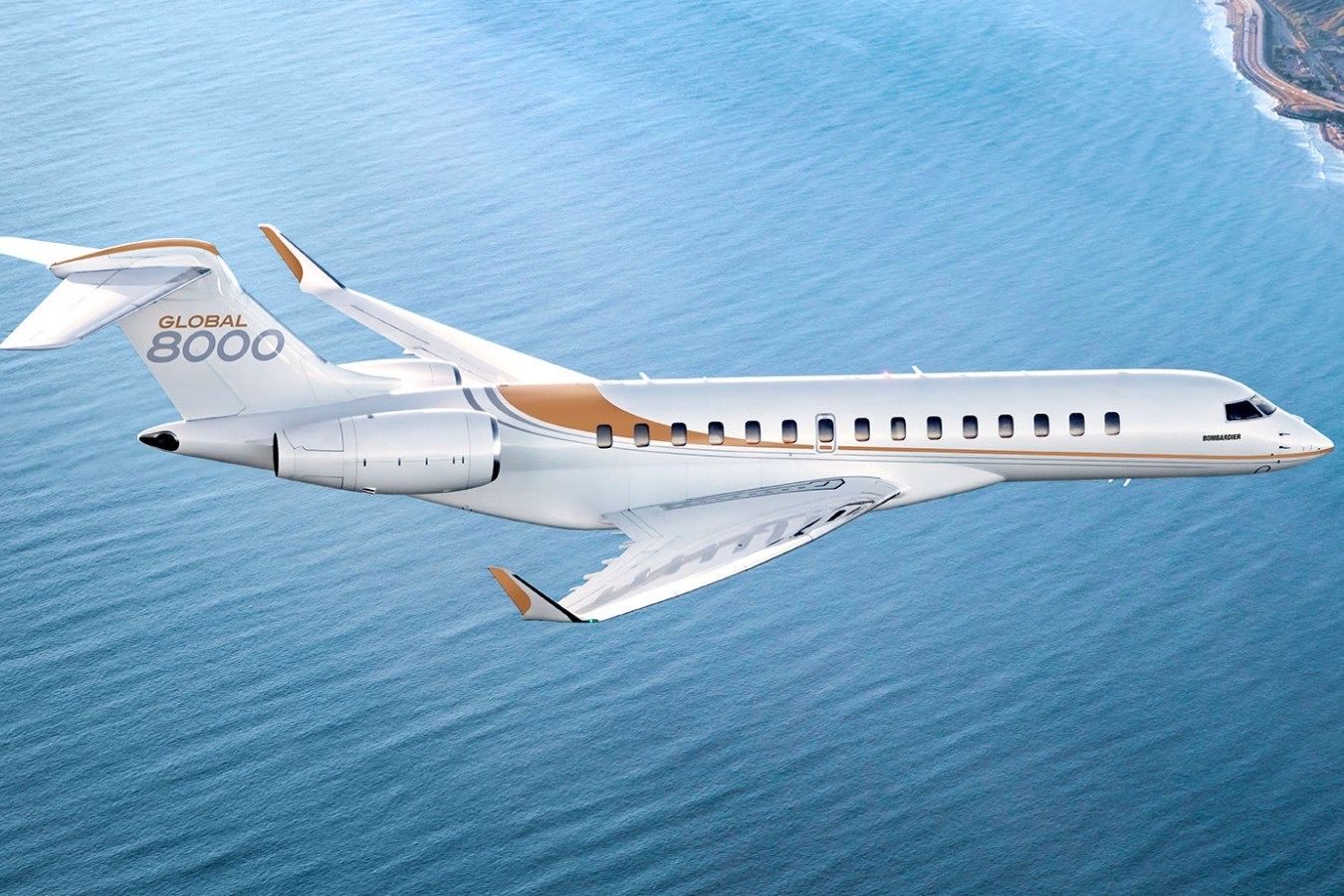
Bombardier Business Jets: A Brief History
Bombardier revolutionized the business aviation industry with its futuristic design and robust engineering.
The engine also has a relatively extensive commercial history, serving as the primary powerplant for the Boeing 717. The engine is produced by Rolls Royce-Deutschland, and the program was initially launched as a joint venture between the company and BMW, which, while known as an automaker today, has an extensive history of aircraft engine manufacturing.
4 General Electric Passport
Thrust: 17,700-18,900 lbf
|
First run: |
2013 |
|
Fan diameter: |
52 in (130 cm) |
|
Bypass ratio: |
5.6:1 |
The GE Passport is one of the latest high-bypass turbofans from manufacturer General Electric. It was developed from the company’s successful CF34 engine alongside the CFM International LEAP, which GE designed in collaboration with French firm Safran Aircraft Engines. The engine is substantially similar to the latter, as it is essentially a scaled-down version of the 737 MAX and A321neo engine used to power long-range business jets.
Unlike others on this list, the engine has seen somewhat limited application (as the CFM LEAP is more optimal for commercial operations), as its combination of small size but high power makes it unideal for most applications. However, Bombardier has found an ideal airframe for the engine to power in its Global 7500 and 8000 series long-range private jets.
5 Honeywell TFE731
Thrust: 3,500-4,600 lbf
|
First run: |
1970 |
|
Fan diameter: |
39.4 in (100 cm) |
|
Bypass ratio: |
2.8:1 |
Previously known as the Garrett TFE731, this engine family was first introduced in 1972 and has proven extensively popular, with over 11,000 engines coming off of Honeywell (and formerly Garrett AiResearch) assembly lines. The engine was popular with various business jet operators and served as the powerplant for the Learjet 35, the best-selling member of Bombardier’s Learjet family.
The engine had a bizarre design history and, during early development, was intended to serve as an auxiliary power unit (APU) for the McDonnell Douglas DC-10, according to Aviation & Marketing International. Throughout its over 100 million flight hours of operation, the engine has powered all sorts of private jets, and the most recent variants power aircraft like the Dassault Falcon 900DX.

